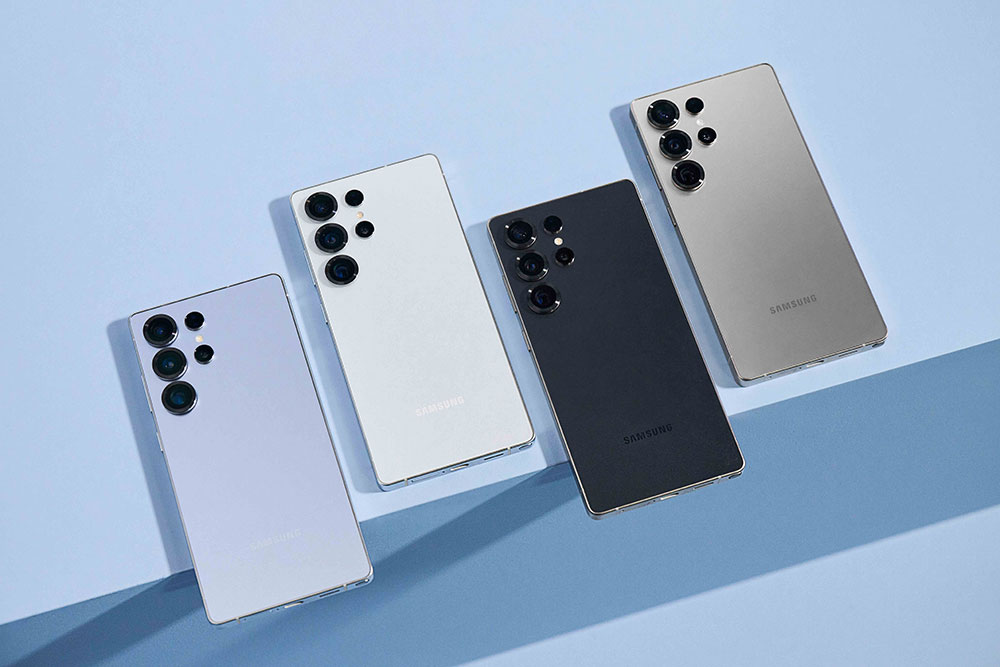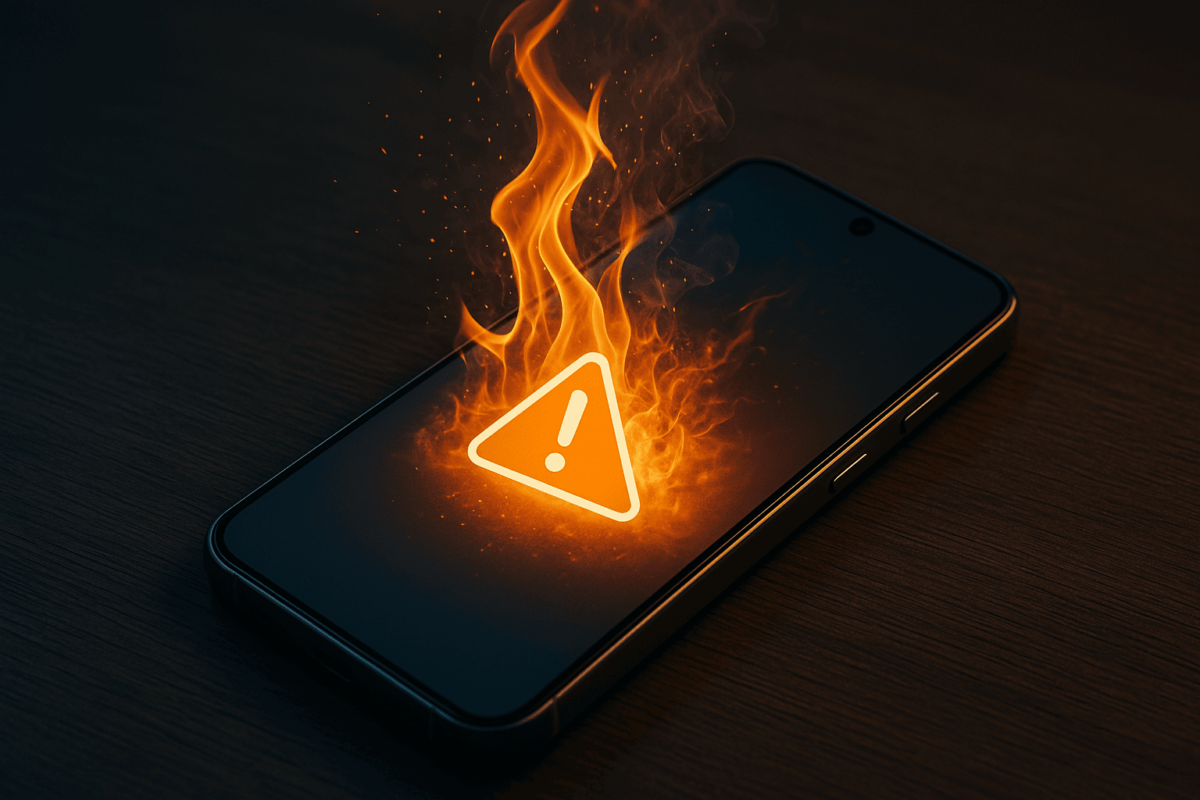The Heat is On: Samsung’s Latest Flagship Faces Temperature Troubles
Just weeks after Samsung’s Galaxy S25 series launched with much fanfare, a concerning pattern has emerged across Singapore’s tech community. Users are reporting significant overheating issues with their brand-new devices, particularly affecting the standard Galaxy S25 model. Moreover, Singapore’s relentless tropical climate appears to be exacerbating these problems, turning what should be Samsung’s triumphant return into a heated controversy.
Having witnessed countless smartphone launches over the years, this situation feels particularly concerning because the overheating isn’t limited to intensive gaming sessions or prolonged video recording. Instead, users are experiencing excessive heat during everyday tasks like WhatsApp video calls, social media browsing, and even simple app installations. Furthermore, the timing couldn’t be worse for Samsung, as the company positioned the S25 series as their most advanced flagship yet.
The Snapdragon 8 Elite: A Double-Edged Sword
At the heart of these overheating concerns lies the Snapdragon 8 Elite processor, which Samsung adopted globally for the Galaxy S25 series. Additionally, this powerful chipset promises a remarkable 40% performance boost over its predecessor, the Snapdragon 8 Gen 3. However, this impressive leap in processing power comes with a significant thermal cost that’s becoming increasingly apparent to users worldwide.
The processor’s aggressive performance profile has already shown troubling signs in other devices. In fact, initial tests of smartphones powered by the Snapdragon 8 Elite, including the Realme GT7 Pro, revealed temperatures reaching 46 degrees Celsius during graphics benchmarks. Moreover, some devices experienced complete shutdowns when temperatures peaked, allowing only emergency calls to function.
Samsung’s Cooling Strategy Falls Short
Samsung engineers weren’t blind to these potential thermal challenges. Consequently, they equipped the Galaxy S25 series with a vapor chamber that’s 40% larger than the previous generation. In addition, the company implemented various thermal management techniques designed to dissipate heat more effectively across the device’s body.
Unfortunately, these cooling enhancements appear insufficient for Singapore’s demanding climate conditions. Furthermore, the improved thermal system means users actually feel more heat on the device’s surface, as the vapor chamber efficiently transfers internal heat to the phone’s exterior. While this prevents component damage, it creates an uncomfortable user experience that’s particularly pronounced in Singapore’s 80%+ humidity levels.
Singapore’s Climate: The Perfect Storm for Overheating
Singapore’s unique environmental conditions create a perfect storm for smartphone overheating issues. Additionally, our tropical climate presents several challenges that amplify the Galaxy S25’s thermal problems:
- High Ambient Temperatures: With daily temperatures consistently above 30°C, smartphones have less thermal headroom for heat dissipation. Moreover, the lack of significant temperature variation means devices rarely get a chance to cool down naturally throughout the day.
- Extreme Humidity Levels: Singapore’s persistent humidity levels above 80% reduce the effectiveness of natural cooling through evaporation. Furthermore, humid conditions make even moderate device temperatures feel uncomfortably hot when held against the skin.
- Rapid Temperature Transitions: Moving between air-conditioned spaces and tropical heat creates thermal shock that stresses internal components. Additionally, these sudden temperature changes can trigger condensation issues that further complicate thermal management.
- Urban Heat Island Effect: Singapore’s dense urban environment and concrete structures trap heat, creating microclimates that are several degrees warmer than surrounding areas. Consequently, smartphones used in CBD areas or shopping districts face even greater thermal challenges.
Real User Experiences: The Heat Gets Personal

The overheating complaints from Singapore users paint a concerning picture of daily frustration. Moreover, these aren’t isolated incidents but rather a widespread pattern affecting users across different usage scenarios.
One Reddit user shared their experience: “Anyone else’s S25 Ultra getting pretty hot during normal use and extremely hot when charging?”. Additionally, another user expressed serious concerns about their device’s temperature: “Mine is absolutely roasting hot after doing simple things. It’s really worrying. I think I’m going to return it if Samsung doesn’t issue an update this month.”
The situation becomes even more troubling when users describe physical discomfort from handling their devices. Furthermore, several Singapore users have reported feeling heat through their protective cases, with one stating: “Yes, mine has been getting pretty hot to the point I can feel it through the case. I upgraded from the S24 due to heating and now I might move away from the S25 if this doesn’t get fixed.”
The Charging Dilemma
Charging scenarios present the most severe overheating challenges for Galaxy S25 users in Singapore. In addition, the combination of Singapore’s ambient heat and the device’s internal heat generation during charging creates uncomfortably high temperatures. Users report that even standard cable charging, not just wireless charging, produces excessive heat that makes the device nearly unusable.
This charging heat issue becomes particularly problematic for Singapore’s mobile-first lifestyle. Moreover, many users rely on their smartphones for digital payments, work communications, and navigation throughout the day, making extended charging downtime impractical.
Technical Deep Dive: Understanding the Root Causes
The Galaxy S25’s overheating issues stem from multiple interconnected factors that create a complex thermal challenge. Additionally, understanding these root causes helps explain why the problem is particularly severe in Singapore’s climate.
Processor Architecture Challenges
The Snapdragon 8 Elite’s advanced 3nm manufacturing process, while more efficient than previous generations, still generates significant heat under load. Furthermore, the processor’s aggressive boost algorithms push CPU and GPU cores to their maximum frequencies, creating thermal spikes that exceed the cooling system’s capacity.
Moreover, the chip’s AI processing capabilities add another layer of thermal complexity. Machine learning tasks and computational photography features generate sustained heat loads that compound with regular processing demands.
Background Process Accumulation
New Galaxy S25 devices face additional thermal stress from initial setup processes. Additionally, Smart Switch data transfers, app synchronization, and system optimization tasks create high CPU utilization that continues for days after initial setup. Furthermore, these background processes often run simultaneously, creating thermal loads that exceed normal usage patterns.
Network Connectivity Heat
Singapore’s mixed 4G/5G coverage creates additional thermal challenges as the device’s modem works harder to maintain stable connections. Moreover, constant network switching between different signal strengths forces the radio components to consume more power, generating additional heat that adds to the overall thermal load.
DIY Solutions: Cooling Down Your Galaxy S25
While waiting for Samsung’s official response, several practical solutions can help Singapore users manage their Galaxy S25’s overheating issues. Additionally, these strategies address both immediate cooling needs and long-term thermal management.
Performance Optimization Strategies
- Adjust Processing Speed: Navigate to Settings > Battery & Device Care > Battery > More Battery Settings > Processing Speed. Moreover, switching from “High Performance” to “Optimized” or “Light” mode significantly reduces heat generation while maintaining adequate performance for most tasks.
- Utilize Thermal Guardian: Download Samsung’s Good Guardians app from the Galaxy Store and activate Thermal Guardian. Furthermore, this tool provides real-time temperature monitoring and automatically adjusts performance when thermal thresholds are exceeded.
- Optimize Background Applications: Access Settings > Battery & Device Care > Battery > Background Usage Limits to identify and restrict power-hungry applications. Additionally, enabling “Put Unused Apps to Sleep” prevents unnecessary background processes that contribute to heat generation.
Environmental and Usage Modifications
- Strategic Charging Practices: Avoid using the device while charging, particularly for demanding tasks like gaming or video streaming. Moreover, charge your Galaxy S25 in well-ventilated areas and remove thick protective cases during charging sessions to improve heat dissipation.
- Network Management: Temporarily disable 5G connectivity when not needed by accessing Settings > Connections > Mobile Networks > Network Mode and selecting LTE/4G. Furthermore, this reduces the thermal load from the device’s 5G modem, which generates significant heat in Singapore’s mixed-coverage environment.
- Display and Connectivity Adjustments: Reduce screen brightness to appropriate levels and disable unnecessary features like Wi-Fi, Bluetooth, and GPS when not in use. Additionally, switching from 120Hz to 60Hz refresh rate reduces both power consumption and heat generation.
When Professional Repair Services Become Necessary
Despite DIY solutions, some Galaxy S25 overheating issues require professional intervention. Moreover, certain warning signs indicate when the problem has moved beyond user-manageable solutions into potential hardware failure territory.
Recognizing Serious Overheating Symptoms
- Persistent Heat Without Heavy Usage: If your Galaxy S25 becomes uncomfortably hot during light tasks like messaging or basic web browsing, this indicates a more serious thermal management failure. Additionally, heat that persists even after closing all applications suggests potential hardware issues that require professional diagnosis.
- Charging Port Heat Concentration: Excessive heat concentrated around the charging port area may indicate internal component damage or charging circuit problems. Furthermore, Singapore’s humid climate can accelerate corrosion in charging ports, creating additional thermal issues that require specialized cleaning and repair.
- Performance Throttling and Shutdowns: Samsung’s built-in thermal protection will automatically reduce performance and eventually shut down the device when temperatures exceed safe thresholds. Moreover, frequent thermal shutdowns indicate that the cooling system cannot manage the device’s heat output effectively.
Professional Diagnostic Services
Singapore’s authorized Samsung service centers offer comprehensive thermal diagnostics that identify specific overheating causes. Additionally, professional technicians can distinguish between software-related thermal issues and hardware failures that require component replacement.
- Thermal Imaging Analysis: Professional repair services use thermal imaging cameras to identify heat distribution patterns and pinpoint specific components generating excessive heat. Furthermore, this diagnostic approach helps determine whether the issue stems from processor mounting, thermal paste degradation, or cooling system failures.
- Component-Level Repairs: Advanced repair services can address hardware-level thermal issues through thermal paste replacement, cooling system cleaning, or component replacement. Moreover, these repairs often resolve overheating problems that software solutions cannot address.
Prevention Strategies for Singapore Users
Given Singapore’s challenging climate, proactive thermal management becomes essential for Galaxy S25 users. Additionally, implementing preventive measures can significantly reduce the likelihood of overheating issues and extend device lifespan.

Environmental Awareness
- Climate-Conscious Usage: Avoid extended outdoor usage during Singapore’s peak heat hours (11 AM to 3 PM). Moreover, seek air-conditioned environments for demanding tasks like video calls, gaming, or large file downloads.
- Protective Case Selection: Choose cases with adequate ventilation and heat dissipation properties. Furthermore, avoid thick leather or rubber cases that trap heat against the device’s body. Additionally, consider cases with built-in cooling features or heat-dissipating materials specifically designed for tropical climates.
- Storage Considerations: Never leave your Galaxy S25 in direct sunlight or enclosed spaces like cars during Singapore’s hot afternoons. Moreover, extreme temperatures can cause permanent damage to internal components and battery degradation.
Maintenance and Monitoring
- Regular Software Updates: Keep your device updated with the latest Samsung software releases, which often include thermal management improvements and bug fixes. Additionally, enable automatic updates to ensure optimal performance and thermal efficiency.
- Battery Health Monitoring: Monitor your Galaxy S25’s battery health through Samsung’s built-in diagnostics. Furthermore, degraded batteries generate more heat during charging and usage, contributing to overall thermal issues.
- Professional Cleaning Services: Singapore’s dusty environment can accumulate debris in device ports and cooling vents. Moreover, professional cleaning services can remove accumulated dust and debris that impede heat dissipation.
The Road Ahead: Samsung’s Response and Industry Implications
Samsung’s response to the Galaxy S25 overheating issues will likely shape the company’s reputation and future product development strategies. Additionally, the situation highlights broader industry challenges with high-performance mobile processors in tropical climates.
Expected Software Solutions
Industry analysts anticipate that Samsung will release software updates addressing thermal management algorithms and performance scaling. Moreover, these updates may include Singapore-specific optimizations that account for local climate conditions.
- Adaptive Thermal Management: Future updates may implement more sophisticated thermal management that adjusts performance based on ambient temperature and usage patterns. Furthermore, machine learning algorithms could optimize performance profiles for individual users and environmental conditions.
- Enhanced Cooling Algorithms: Samsung may improve the thermal management software to more effectively utilize the existing vapor chamber system. Additionally, better heat distribution algorithms could reduce hot spots and improve overall thermal comfort.
Long-Term Industry Impact
The Galaxy S25’s overheating issues reflect broader challenges facing the smartphone industry as processors become more powerful. Moreover, tropical markets like Singapore require specialized thermal solutions that many manufacturers haven’t adequately addressed.
- Climate-Specific Design: Future smartphone designs may need to account for specific regional climate challenges, potentially leading to different thermal management systems for different markets. Furthermore, this could drive innovation in mobile cooling technologies specifically designed for tropical environments.
- Repair Industry Opportunities: The overheating issues create opportunities for specialized repair services that focus on thermal management and climate-specific smartphone maintenance. Additionally, Singapore’s repair industry may develop expertise in tropical climate smartphone issues that could be exported to other regional markets.
Conclusion: Navigating the Heat Challenge
The Samsung Galaxy S25’s overheating issues represent a significant challenge for Singapore users, but they’re not insurmountable. Moreover, understanding the root causes and implementing appropriate solutions can help users manage their devices effectively while Samsung works on permanent fixes.
For Singapore users currently experiencing overheating issues, the combination of software optimizations, environmental awareness, and professional support when needed provides a comprehensive approach to thermal management. Furthermore, the situation underscores the importance of choosing repair services that understand Singapore’s unique climate challenges and their impact on mobile device performance.
As the smartphone industry continues pushing performance boundaries, thermal management will become increasingly critical, particularly in tropical markets like Singapore. Additionally, this situation may ultimately drive innovation in mobile cooling technologies and climate-specific device optimization, potentially benefiting users worldwide.
The Galaxy S25’s heat problems serve as a reminder that cutting-edge technology must be balanced with practical usability, especially in challenging environmental conditions. Moreover, Singapore’s experience with these devices may inform future smartphone designs and thermal management strategies for tropical markets globally.

